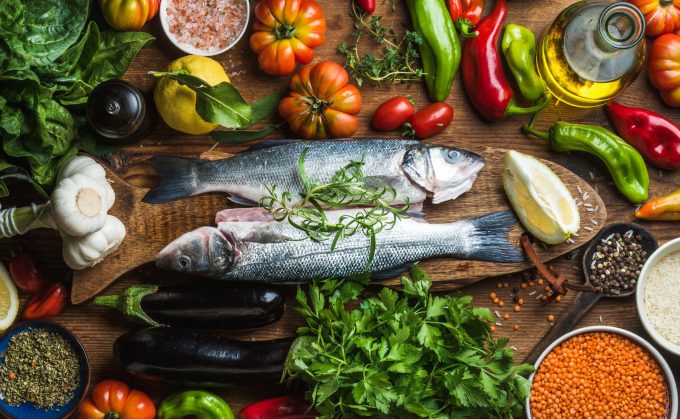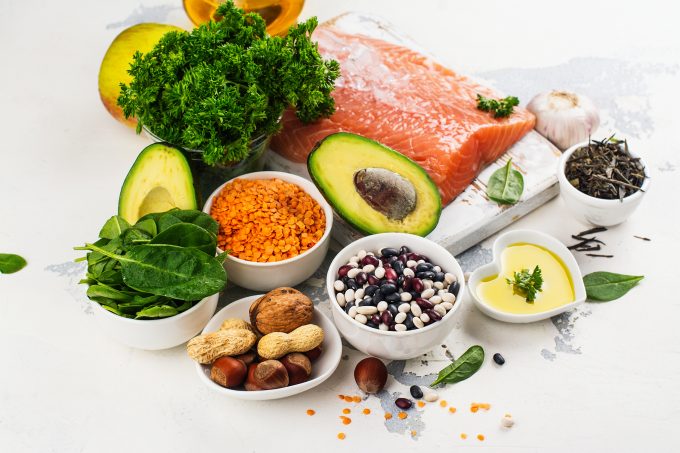Nutrition & environment
Human nutrition links health with environmental sustainability. That is food consumption may affect human health but may also affect the environment. Shifting to a nutrition pattern which promotes environmental “health” could be beneficial to both human health and environmental sustainability.
In fact, it seems that unhealthy nutrition constitutes a greater health risk than alcohol, drugs, tobacco consumption and unsafe sex all joint together. On the other hand food production is the top factor behind environmental changes, responsible for about 30% of greenhouse gases emissions and 70% of fresh water use.

The data at hand show that diets high in calories, fat, saturated fat, processed foods are also the ones most contributing to environmental degradation. In other words this nutrition pattern is both unhealthy and harmful to the environment.
Ecumenical diet
The EAT – Lancet committee in order to strike a balance between healthy diets and food systems sustainability formulated a universal – ecumenical dietary pattern. Furthermore it relied on this pattern in order to make quantitative estimations of the effects it would have on health and the environment, and then compare those effects with the ones of existing dietary patterns.
Its members consider this pattern to be truly ecumenical and easily adaptable to different nutritional cultures and production systems, since it suggests a range of options.
In order to formulate this healthy diet they used five food groups proteins, carbohydrates, fruits and vegetables, added fat and added sugar. At the same time they took into account nutritional adequacy, which is defined as the quantity of nutrients necessary for optimum possible health. While also including fat, sugar or sweeteners and salt quantities without which the pattern would be unreliable.
This reference diet concerns individuals 2 years of age or older and consists of quantity ranges for each nutritional group.
The pattern sets daily caloric intake at 2500 kcal. This figure is very close to the global energy intake which is estimated at 2370 kcal. Also it appertains to the daily energy needs of a 30 year old man weighing 70 kg and 60 kg female of equal age, whole physical activity level is average to high.
Let us move on to nutritional groups:
Protein
Adequate quantity of protein intake is 0.8 g for a kg of body weight. For instance if one weighs 90 kg they should consume 72 g of protein per day. If protein quality is defined by its effect on growth rate then animal protein should be considered of higher quality. Although high quality protein is important for infants and young children, maybe for the elderly as well, the same is not true for adults in general. Main sources of protein are meat, dairy, fish, eggs, legumes and nuts.

Concerning meat we make a distinction between red meat and poultry, we will talk about fish below. Since red, especially processed, is linked to a series of medical conditions, opting for poultry is thought of as healthier. Consequently desired daily quantity of poultry should be greater than that of red meat. More specifically the range for red is 0 to 28 g per day, and set for the purposes of this reference diet at 14 g per day. On the other hand the relevant quantity for poultry is 29 g per day (whereas the relevant range is 0 to 58 g).
For dairy and milk at 0 – 500 g / per day is where we can find the quantity that guarantees that the benefits of consumption outweigh the dangers. Reference amount is 250 g /per day.
The next protein source is fish. Reference quantity per day is 28 g. Besides this the committee suggests the range of 0-100 g / per day, meaning one can consume a lot more than 28 g. The rationale behind this deviation is that high intake is generally related to good health, particularly with low risk of cardiovascular disease. The sole cause for concern here is that big fish may contain high quantities of mercury which neurologically toxic. Hence women who are pregnant or lactating should avoid them.
Up next are eggs, for which the target is 13 gr per day or 1.5 egg per week.
We move on to nuts who have many nutrients and whose consumption is associated to low visceral fat, low cholesterol, low risk of cardiovascular disease and type 2 diabetes. Also they amplify the feeling of satiety and therefore contribute to weight loss or/and maintenance. For the reference diet they are used as a red meat alternative and daily intake is 50 g.
Finally legumes also benefit health (low LDL cholesterol, low blood pressure etc.) and the quantity set by the committee is 50 g / per day weighted dry for beans, lentils, peas and 25 g / per day for soy beans.
Carbohydrates
Carbohydrates are the main source of energy in most diets around the world. Carbohydrate sources are grains and their products (like bread) and bulbs (ex potatoes). Both of those are linked to several conditions when consumed in high quantity. We should note that whole-grains are clearly preferable to processed as they favor weight maintenance and health in general. In the reference diet they are used to maintain the level of energy intake. By consuming 232 g / per day of whole grains and 50 g /per day (and up to 100 g / per day) of bulbs and starchy vegetables we keep energy intake from carbohydrates at 60%.

Fruits and vegetables
They are necessary in any diet. The target for the reference diet of 300 g of vegetables per day and 200 g of fruit (alternatively 5 portions of fruits and vegetables daily.
Added fat
One should take into account the quantity of fat in its food, either already contained in food or added during cooking. Roughly added sugar should not exceed 50 g daily, while vegetable oils which are low in saturated fat should be preferred from animal ones. For example unsaturated vegetable oils do not raise the risk of cardiovascular diseases as much as dairy fat.
Added sugars
We should be mindful of the quantity of sugar and sweeteners we consume. Reference amount is 31 g per day or slightly less than 5% of daily energy intake.

This ecumenical diet cannot be used as a direction for each individual, this should be evaluated in cooperation with a Dietitian, it can be used however as a quantity point of reference for where we should be heading if we wish to combine the “health” of the planet with the health of the individuals that live on it.
Reference
Food in the Anthropocene: the EAT–Lancet Commission on healthy diets from sustainable food systems







